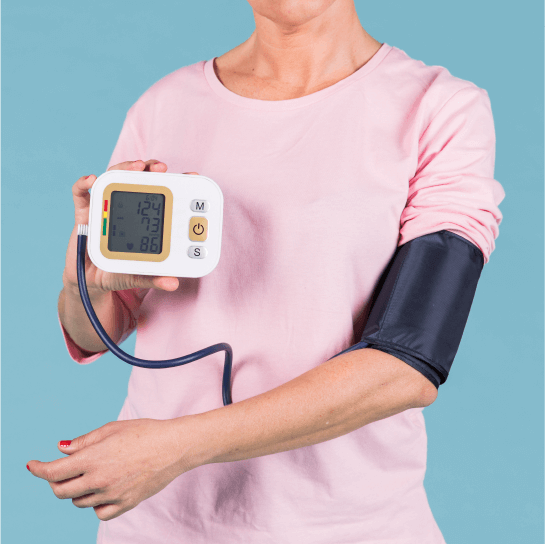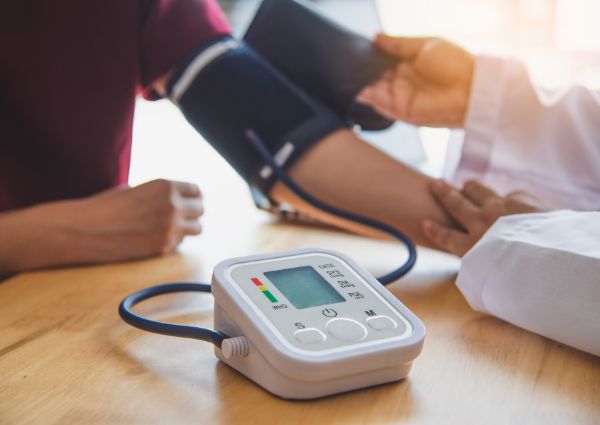Understanding the Importance of the ABPM Test in High Blood Pressure Management
Ambulatory Blood Pressure Monitoring (ABPM) is a pivotal tool in taking care of high blood pressure. By providing constant blood pressure readings over 24 hr, it offers insights that standard measurements can not. This technique can expose conditions such as white layer syndrome and concealed high blood pressure. Recognizing these subtleties is crucial for efficient person care. As health care advances, the ramifications of ABPM fit tailored treatment techniques become significantly significant. What does this mean for the future of high blood pressure administration?
What Is Ambulatory Blood Pressure Monitoring (ABPM)?
Ambulatory Blood Pressure Monitoring (ABPM) is an approach that permits the constant dimension of blood pressure over a 24-hour period while individuals engage in their everyday tasks. This cutting-edge technique entails the usage of a portable tool that automatically takes blood pressure analyses at set intervals, usually every 15 to 30 minutes. ABPM gives an extensive profile of blood pressure fluctuations throughout the day and evening, catching variants that may be missed out on throughout common office measurements.It is specifically useful for diagnosing conditions such as hypertension and white layer disorder, where people display elevated readings only in professional settings. By providing real-time data, ABPM boosts the accuracy of hypertension evaluations and aids in customizing therapy strategies. The insights gained from this monitoring might bring about far better administration of cardio health and wellness, strengthening the significance of ABPM in modern-day medical technique.
Exactly How ABPM Varies From Traditional Blood Pressure Measurements
While standard blood pressure measurements commonly count on readings taken in a medical setting, ABPM uses an extra extensive strategy by assessing blood pressure over a full 24-hour duration. Typical techniques often create a minimal variety of analyses that may not capture changes in blood pressure throughout the day. On the other hand, ABPM permits for continuous monitoring, offering insights right into variations during various tasks, such as sleeping and exercising.Additionally, typical measurements might be influenced by the client's anxiousness during a medical professional's visit, understood as "white coat disorder," potentially leading to erroneously high readings. ABPM mitigates this issue by accumulating information in a familiar setting, yielding a more precise depiction of an individual's blood pressure. The device typically takes measurements at normal intervals, making sure detailed data collection. This essential distinction highlights the importance of ABPM in offering a total photo of a patient's blood pressure account.
Benefits of ABPM in High Blood Pressure Monitoring
Making use of Ambulatory Blood Pressure Monitoring (ABPM) provides substantial benefits in managing high blood pressure. It uses accurate and constant blood pressure readings, helping to recognize problems such as white coat disorder. This exact information allows medical care service providers to make more individualized therapy changes tailored to specific person demands.
Precise Blood Pressure Monitoring

Identifying White Layer Syndrome
Ambulatory Blood Pressure Monitoring (ABPM) plays a significant role in identifying white layer disorder, a phenomenon where individuals show elevated blood pressure analyses in a clinical setting yet maintain typical levels in their everyday lives. This condition can result in misdiagnosis and unneeded therapy, complicating hypertension management. ABPM gives a detailed analysis of blood pressure over a 24-hour duration, capturing variants that take place during daily activities and rest. By comparing these readings to clinic measurements, health care suppliers can differentiate between true hypertension and white coat disorder. Ultimately, acknowledging this disorder is crucial for customizing proper therapy approaches and preventing overtreatment, making certain that patients obtain treatment that accurately reflects their blood pressure status outside the scientific setting.
Customized Treatment Modifications
Enhancing hypertension administration through personalized therapy modifications ends up being possible with the insights acquired from ABPM. This technique supplies continuous blood pressure monitoring, enabling doctor to determine patterns and variations that might not appear during conventional office visits. By recognizing a person's unique blood pressure profile, clinicians can tailor therapy plans that consider variables such as medication effectiveness, way of life affects, and specific feedback to therapy. This individualized strategy not only improves patient adherence yet additionally enhances total end results by reducing the risk of issues associated with unchecked hypertension. Inevitably, making use of ABPM encourages medical professionals to make enlightened decisions, resulting in more effective monitoring strategies that straighten with each person's particular requirements.
Determining White Layer High Blood Pressure and Masked High Blood Pressure
White coat high blood pressure happens when people Your Domain Name display raised blood pressure readings in a professional setting as a result of anxiousness, while their measurements are typical in various other settings. On the other hand, concealed high blood pressure describes people whose blood pressure is typical throughout clinical sees however elevated in life. Recognizing these two sensations is crucial for exact high blood pressure management and treatment decisions.
Defining White Layer High Blood Pressure
High blood pressure monitoring commonly entails comparing numerous blood pressure conditions, particularly white coat hypertension and concealed hypertension. White coat hypertension is identified by raised blood pressure readings in professional settings, often due to anxiety connected with clinical environments. Patients with this condition generally display typical blood pressure levels outside of these settings. This sensation can bring about misdiagnosis and unneeded therapy otherwise appropriately identified. It is essential for health care suppliers to acknowledge this problem to avoid overtreatment and to ensure accurate high blood pressure monitoring. ABPM test in Bangalore. Using ambulatory blood pressure monitoring (ABPM) can assist distinguish white coat hypertension from continual hypertension, allowing more effective and customized treatment methods for people experiencing this distinct blood pressure response
Comprehending Masked High Blood Pressure
Masked high blood pressure presents a significant obstacle in high blood pressure administration, as it often goes unnoticed in medical setups. This problem happens when a client's blood pressure analyses are regular throughout medical gos to yet elevated in the house or throughout everyday tasks. Unlike white coat high blood pressure, where anxiousness in a clinical setting brings about temporary spikes in blood pressure, concealed high blood pressure can result in unrecognized cardio risks. People may think they have regular blood pressure, disregarding necessary way of living adjustments or therapies. Identifying covered up high blood pressure is necessary, as it can result in significant health and wellness problems in time. Ambulatory Blood Pressure Monitoring (ABPM) is an efficient device for discovering this problem, making it possible for medical care experts to offer timely intervention and boost person end results.
The Role of ABPM in Personalized Therapy Strategies
As health care service providers significantly discover here acknowledge the significance of individualized treatment, the execution of Ambulatory Blood Pressure Monitoring (ABPM) has actually ended up being important in customizing therapy prepare for individuals with high blood pressure. ABPM enables continual blood pressure measurement over 24 hr, revealing patterns that may be missed throughout standard office sees. This comprehensive information uses insights into a client's blood pressure variability and nighttime degrees, which are essential for understanding general cardiovascular danger.
Interpreting ABPM Outcomes: Understanding Patterns and Patterns
Analyzing the arise from Ambulatory Blood Pressure Monitoring (ABPM) needs a keen understanding of different patterns and fads that arise from the gathered information. Medical professionals examine the 24-hour blood pressure profile, comparing daytime and nighttime analyses to identify possible white-coat hypertension or concealed high blood pressure. A regular elevation in daytime analyses may indicate improperly managed hypertension, while nighttime dips can represent efficient blood pressure monitoring or nocturnal hypertension, which poses extra cardiovascular risks.Trends gradually, such as sustained boosts or fluctuations, are additionally important. Variability in readings can recommend underlying issues, such as stress or drug non-adherence. Furthermore, the analysis of blood pressure patterns in regard to everyday activities can offer insights right into lifestyle aspects affecting high blood pressure. By carefully analyzing these outcomes, health care experts can tailor therapy strategies to enhance patient outcomes in hypertension management, eventually resulting in far better cardio health.
The Future of Blood Pressure Monitoring and High Blood Pressure Care
Emerging site web modern technologies and innovations are poised to revolutionize blood pressure monitoring and high blood pressure care in the coming years. Wearable devices outfitted with innovative sensing units are anticipated to give constant, real-time blood pressure analyses, permitting even more individualized treatment regimens. These devices will certainly not just boost person involvement however likewise promote remote monitoring by doctor, leading to timely interventions.Artificial knowledge and artificial intelligence algorithms will play a necessary role in analyzing client information, recognizing trends, and anticipating hypertension-related issues. This anticipating ability can lead to even more aggressive management methods. In addition, telehealth solutions will likely expand, enabling clients to consult with professionals and get customized guidance without the need for in-person visits.Furthermore, developments in mobile applications might empower clients to track their blood pressure individually, fostering a feeling of possession over their wellness. Generally, the future of blood pressure monitoring and high blood pressure treatment appears appealing, with innovation at its forefront.
Frequently Asked Inquiries

How much time Does an ABPM Test Commonly Last?
The ABPM test usually lasts 24 hr. During this duration, a mobile tool actions blood pressure at routine intervals, providing substantial information on a person's blood pressure patterns throughout day-to-day tasks and rest.
Can ABPM Be Made Use Of for Children and Teenagers?
ABPM can undoubtedly be utilized for youngsters and teens - ABPM test in Bangalore. It offers valuable insights into their blood pressure patterns, assisting health care providers properly diagnose and take care of hypertension in younger populations, advertising much better long-term health outcomes

What Should I Stay clear of Before Taking an ABPM Test?

Prior to taking an ABPM test, individuals should stay clear of high levels of caffeine, nicotine, and difficult exercise, as these can briefly boost blood pressure analyses. Furthermore, it's advisable to avoid wearing tight clothing that might hinder dimension accuracy.
Exactly how Typically Should I Undertake ABPM Screening?
The frequency of ABPM testing varies based on private health and wellness demands. Usually, it is advised every six to twelve months, specifically for those with uncontrolled hypertension or considerable changes in blood pressure drug. Regular monitoring aids reliable management.
Is ABPM Covered by Insurance Plans?
The coverage of ABPM screening by insurance plans differs substantially. Clients need to consult their details insurance policy providers to figure out qualification and any prospective out-of-pocket costs related to this analysis treatment for high blood pressure management.